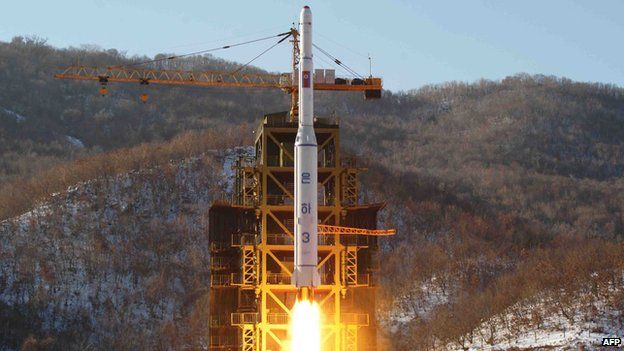
Kim Jong Un and Trump: A War of Nerves
In Japan, the latter launch caused a real psychological and political commotion. The test was described as truly “provocative” in the press. Public television programs were interrupted with warnings on the screens. Some bullet train lines suspended their service for some minutes. The political debate about the need to reform the constitution and strengthen Japan's offensive capabilities was rekindled. Now with tempers heated, Trump reverts to his style of twitter threats: “The U.S. has been talking to North Korea, and paying them extortion money, for 25 years.” “The time for talk is over.”* “All options are on the table.”
But are they really?
There’s a scene in the series “Hostages” in which a police commander warns the head of the special forces: If there is no good, safe, tactical operation to deal with the hostage situation without a blood bath, there is no alternative other than to deal with the captors. Maybe the situation with North Korea is not so different. Bannon, Trump’s ex-strategist, in an interview with The American Prospect magazine, put it this way: “There’s no military solution [to North Korea’s nuclear threats], forget it. Until somebody solves the part of the equation that shows me that ten million people in Seoul don’t die in the first 30 minutes from conventional weapons, I don’t know what you’re talking about, there’s no military solution here, they got us.” It is not the case that 10 million people would die in 30 seconds, but that, according to serious projections, dozens, if not hundreds of thousands of people would die in the first days. So, assuming that in a war, Washington would wind up reducing or eliminating North Korea’s conventional capacity in short order, and that this would eventually result in the collapse of the regime, the damage provoked by Pyongyang would be unacceptable to the actors involved. This is one of the factors that gives the edge to Kim’s maneuver.
The above comparison with the situation of hostages may be simplistic and exaggerated, but it could serve to offer a hypothesis. Theoretically, the window in which the U.S. could attack North Korea would open only if: (a) The U.S. is certain that a preventive attack against Pyongyang would not result in a major escalation of hostilities, the escalation which Kim has promised in his first threat; (b) Washington were capable of developing tactics that could neutralize the immediate offensive capacity of Pyongyang, minimizing at the same time the human cost that an escalation would cause; (c) Trump were ready to accept and assume this extremely high human cost and there was no internal or external actor – Seoul and Tokyo included – that could convince him to the contrary. Otherwise, the president’s threats are hollow.
Without these aforementioned conditions, Washington would have to live with the reality of the only alternatives to solve the conflict: sanctions and / or negotiations under new terms and circumstances. The present conditions assume: (1) North Korea has functioning intercontinental ballistic missiles capable of threatening any part of U.S. territory; (2) Pyongyang has succeeded in miniaturizing and mounting an atomic bomb that is transportable in those missiles; (3) the only thing that Kim could be lacking is the technology for the re-entry of the missiles into the atmosphere, which he’ll probably get in the next few months; and (4) for the moment, there aren’t too many concessions that can be hoped for from him if what is hoped for is a turnaround on the path of these projects.
In the same sense, without many options on the table Washington would have to make sure that it can count on the collaboration of China and Russia—finding and taking advantage of the common interests of these powers—in the deactivation of the most imminent risks as well as in reducing long term risk that a nuclearized Pyongyang brings. But for that, the White House would have to come to grips with what Beijing and Moscow have proposed in order to untangle the crisis: The freezing of the North Korean nuclear project in exchange for the suspension of the U.S. and regional allies’ military exercises, as a starting point in the effort to return to the path of dialogue.
The alternative is to continue feeding the upward spiral of nerves and tensions like now; military exercises by Washington, Seoul and Tokyo that look to show off force and muscle, but as of today, have gotten no other response on the part of Kim than his attempt to show that he will not be dissuaded and that he will maintain the direction of improving nuclear capacity and missiles.
The fact that this time the projectile flew over Japan’s territory brings the theme of rearmament of Japan back on the agenda, a rearmament that has taken place for years, but could take on larger dimensions, contributing to the acceleration of the path toward an arms race in the region.
Given that the rhetoric of the “Axis of Evil” of Bush and the “Strategic Patience” of Obama weren’t effective in resolving the situation on the Korean peninsula, it is unlikely that the “Fire and Fury” of Trump will resolve it either. But now, the risks are greater and the ways to act much narrower. The possibility that someone commits errors of calculation, or that their own words and threats may drive them to stumble into war, continues to rise.
*Editor’s note: This quotation, accurately translated, comes from a statement made by Nikki Haley, U.S. envoy to the United Nations.

